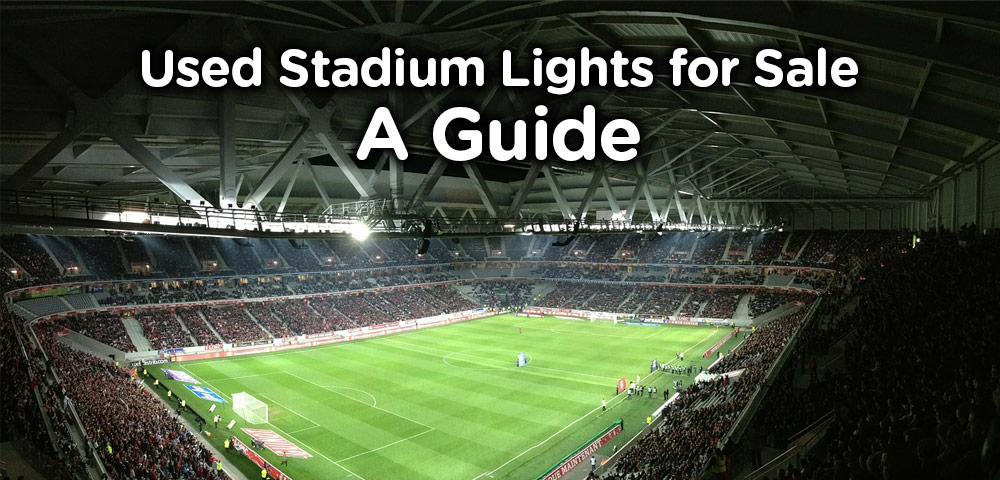We’ve all seen them. The bright lights beaming down onto the field of play. Stadium lights are used in various arenas but are a primary staple in sporting arenas. Stadium lights rely upon artificial lighting, that’s placed insider a stadium (or outdoors), to help recreate natural lighting that you’d see if playing during the day. They’re used in both indoor and outdoor settings. But, choosing the right stadium lights requires some research to help consumers make the right decision when they’re ready to decide on the right stadium lights to invest int.
Here we’ll cover
• The primary uses of stadium lights
• How to select stadium lights
• How much wattage/energy is required and what’s the best rating based on the type of sport being played
• Whether used stadium lights are safe to buy; and,
• How to choose used stadium lights if you’re going to buy used, rather than new.
No two stadiums are alike. Therefore, the stadium lighting you choose to purchase for an arena, whether it’s in or outdoors, will vary. So, let’s cover some primary purchase aspects you need to focus on when you’ve decided to buy used stadium lighting.
What are Stadium Lights Used for?
Stadium lights have enhanced the way we enjoy sports and other indoor performances. Sodium-lighting fixtures that were previously used, have been updated to LED lighting, that’s far more efficient, brighter, and greatly enhances how we can see players/performers, regardless of how dark the external conditions get.
Where are we primarily seeing stadium lights pop up? Many arenas and stadiums that have installed new stadium LED lights, to help enhance the fan experience at live events. Here are some popular places where you’ll see stadium lights today.
1. Sporting Arenas
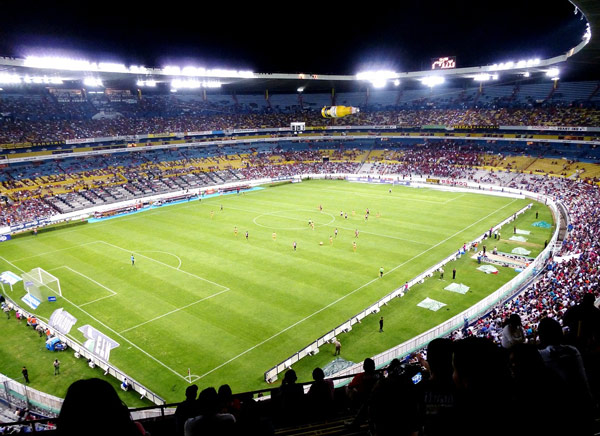 Fields of play and indoor arenas are the primary industry where stadium lights are utilized to mimic natural outdoor lighting. As the name suggests, “stadium” lighting helps improve the aesthetics on the field, as well as the appearance of players, colors and the movement during live play.
Fields of play and indoor arenas are the primary industry where stadium lights are utilized to mimic natural outdoor lighting. As the name suggests, “stadium” lighting helps improve the aesthetics on the field, as well as the appearance of players, colors and the movement during live play.
2. Tennis court
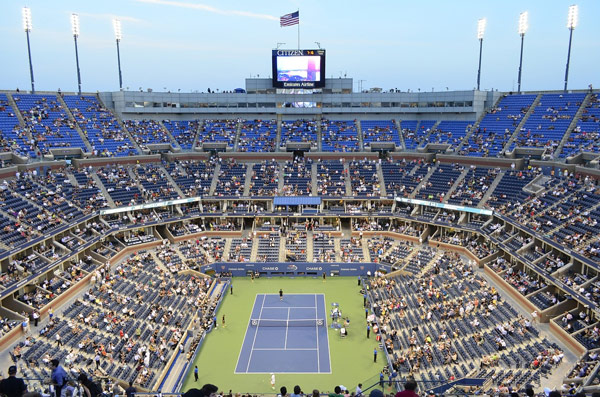 LED stadium lights replace
LED stadium lights replace
• Halogen
• Mercury
• Metal halide, or HPS lighting in tennis stadiums today.
Solar-powered floodlights are a good option for tennis arenas. Because the green grass, orange surfaces, or bright blue surfaces on tennis courts required lower-powered light options, floodlights are a top choice. Apart from reducing glare, they can also reduce energy consumption by up to 90%. The lights are great on clay, grass, or hard-surfaces.
3. Football field
High-powered LED lights are the best choice for large stadiums, like a football stadium that can seat over 60,000 fans. These lights help
• Enhance the presentation of play on the field
• Help improve the appearance on TV in HD
• Allow for innovative light shows (color changes) during the halftime performance
• Help increase clarity
These lights are also cheaper to operate, energy-efficient, and aren’t prone to major outages, as other types of lighting might be.
4. Soccer, Baseball, & Cricket
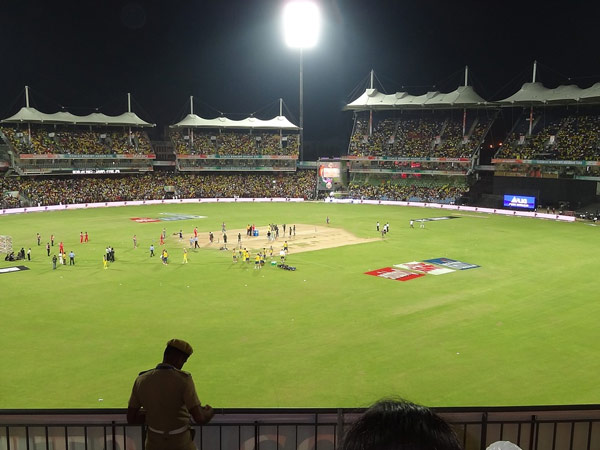 Although not as popular in the US as other regions of the world, cricket and soccer (futebol) are two of the most popular sports in the world. To produce enough power for these fields LED floodlights are used in most stadiums. The reason for picking this type of lighting is that these lights emit a bright white light onto the field. It helps to balance the green playing surface (lawn or artificial turf), sandy surfaces in some stadiums (where they begin and end), and the white lines (out of bounds) on the field well. Additionally, these lights are great for
Although not as popular in the US as other regions of the world, cricket and soccer (futebol) are two of the most popular sports in the world. To produce enough power for these fields LED floodlights are used in most stadiums. The reason for picking this type of lighting is that these lights emit a bright white light onto the field. It helps to balance the green playing surface (lawn or artificial turf), sandy surfaces in some stadiums (where they begin and end), and the white lines (out of bounds) on the field well. Additionally, these lights are great for
• Helping players see the ball (cricket) when it flies high into the air
• Seeing the ball (soccer) on the green field
• Illuminating the field without zebra-spots
• Illuminate the field even under tarps/covers
Baseball is one of the most popular sports in the US. In these stadiums, LED floodlights are used for similar reasons. The ball can be seen, regardless of how high in the air it reaches, so players have a better opportunity to make a play on the ball.
5. Indoor Sports
Yes, we primarily think of stadium lights for outdoor stadiums. However, they’re also used indoor for sports like
• Basketball
• Hockey
• Swimming stadiums/arenas
• Indoor tennis
• Concerts and live performances, and other indoor activities.
In indoor settings, indoor LED floodlights are the premier choice for stadium lighting needs. To guarantee clear visibility for players and fans in the arena, these lights can be modified to brighter/darker settings, as needed. They also help light the indoor stadium evenly so there are no dark or dead spots. And, the lights help minimize glare (underwater or bouncing off the court), so players can compete at the highest levels, delivering the greatest level of competition for fans in attendance.
What are “Used” or Second-Hand Stadium Lights?
Exactly what the name says! Used stadium lights are lights that have been previously used in another stadium, theater, or outdoor setting. They’re considered “second-hand” lights because they aren’t brand new.
Why Purchase Used Stadium Lights?
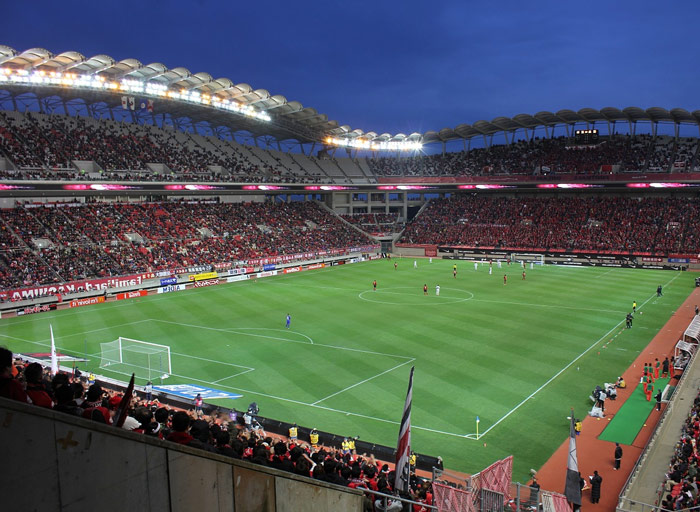 The main reason a school, professional sports team, or another client would consider buying second-hand stadium lights is for the cost savings. New stadium lights for a high school arena or field can exceed $250,000 when they’re professionally installed. At the professional level, the cost can surpass $1-million (much more in some stadiums based on the size, acoustics, and other variables in the stadium). This is a major investment, and it is one that most people do not take lightly (nor should they).
The main reason a school, professional sports team, or another client would consider buying second-hand stadium lights is for the cost savings. New stadium lights for a high school arena or field can exceed $250,000 when they’re professionally installed. At the professional level, the cost can surpass $1-million (much more in some stadiums based on the size, acoustics, and other variables in the stadium). This is a major investment, and it is one that most people do not take lightly (nor should they).
If choosing to purchase used or second-hand stadium lights, it’s important to
1. Choose a reputable seller.
2. Make sure the company is well-known, guarantees their products, and offers extended warranties on the used lighting
3. Select a company with a solid reputation for selling used lighting for stadium settings
4. Make sure the lighting you’re buying is for sports used (proper lumens, wattage, brilliance, etc.)
5. Offers price match or guaranteed pricing
6. Make sure the company will install the new LED lighting into the stadium (or indoor field of play)
7. Removes the old lighting and properly disposes of it to prevent fees/fines/penalties for illegal disposal or removal of lighting
8. Ensure you trust the company you purchase from. It might seem like something that’s not that important, but it is. You’re spending a lot of money on these lights, you want to choose a company that’s reputable, honest, and stands behind their work.
You have many options when you’re choosing an online or local supplier for your used stadium lights. Don’t make a rash decision or buy the cheapest thing you can find. It will be a decision you regret making down the road. Instead, make sure you know who you’re buying from and that it’s a reputable/trusted dealer. It’s best to choose a company that has
• Solid online reviews & ratings (Google, Yelp, third-party sites)
• Has a Google My Business Page (don’t buy from a company that isn’t registered or doesn’t have the proper licensing)
• Is BBB-listed (A+ rating is the best choice)
• Been in business for many years and has a great reputation (online and locally/nationally).
Take your time in the decision-making process. It’s a major investment, and the lighting will last in your stadium for the next 20+ years (if you make the right choice). So, take your time, know your options, and shop around before you decide which used stadium light supplier to purchase your stadium lights from.
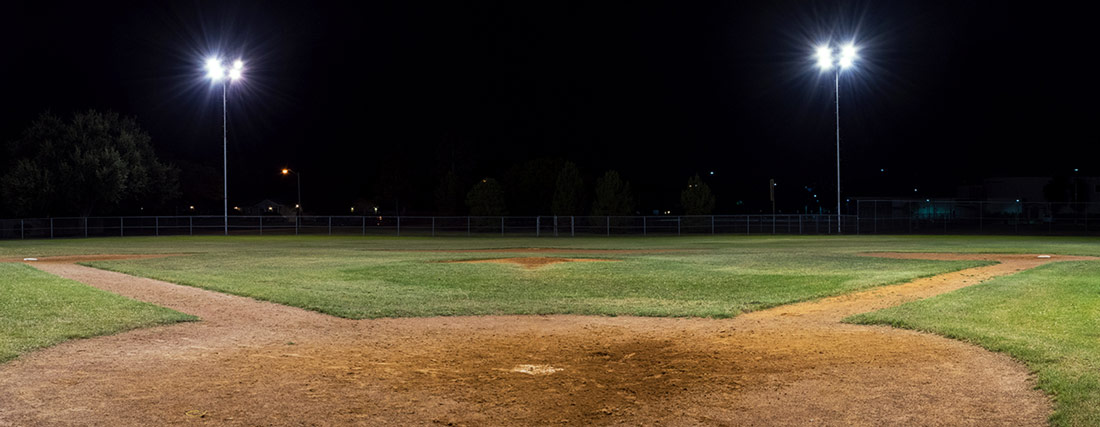
Benefits of Purchasing Used Stadium Lights
As we’ve highlighted, stadium lights are the best option for indoor and outdoor sporting events. However, the high price tag of new stadium lights, easily eclipsing $1-million, is something that not many non-professional sports teams can afford. For those who aren’t able to spend hundreds of thousands, if not millions of dollars on stadium lights, the next best option is to buy used, second-hand stadium lights.
What are the primary benefits of choosing this route? We already know they’re cheaper. But, what other reasons should you consider for investing in used lighting and equipment? We’ll cover a few of the primary benefits of buying second-hand, whether purchasing locally, from a national distributor, or an online retailer.
1. The Price
This is the primary reason many teams, non-professional associations, colleges, or intramural sports teams will decide to buy used, rather than new LED stadium lights. This is probably the most expensive investment companies or teams will make, as it pertains to updating a stadium. Therefore, it’s a decision that those who are in charge of selecting the lighting should take their time making.
Countless suppliers sell used or second-hand stadium lights. These include
• Retailers like eBay or Alibaba (China)
• Government auction sites
• Independent auction and wholesale sites
• Lighting suppliers and used lighting suppliers
Some companies specialize in sports and stadium lighting. When you choose to buy second-hand lighting, make sure it is from a specialist. You can save thousands, if not hundreds of thousands of dollars on used LED stadium lights. However, you have to know you’re buying from a reputable supplier and a company that will guarantee and warrants the purchase you’re making with them.
2. The Quality (if Chosen from the Right Seller)
You don’t have to compromise on the quality of lighting, just because it is second-hand. You can often find used stadium lights that have been used for less than one or two years. Think about this, in comparison to metal halide lights, stadium lights can last three to four times longer. Metal halide lights last up to 12K hours. If the stadium keeps those lights on for 8 hours a day, 15/days per month, that would last up to 10 years.
LED stadium lights, on the other hand, are rated for 50,000+ hours (for the best quality lighting). That means even if you buy a set of used lights that were used for 5 years (about 600 to 1000 hours), you still have 20+ years you’ll get out of those lights. So, imagine you buy high-quality, used stadium lights, from a reputable dealer, and pay $100,000. Expensive, yes. However, in comparison to $200,000+, you’re saving 50%. In some instances, you’ll find even greater deals.
Don’t skimp on the quality of the used lighting you purchase. You want to save, that’s a given. However, you don’t want to spend money foolishly. If you buy used stadium lights, from an unknown company, that isn’t listed and doesn’t guarantee anything for $10,000, you might as well throw the cash away. Take your time to find the right supplier of used lighting, and you’ll get quality lighting that will produce at the highest levels, for 10 years plus, for a fraction of the price you’d pay for new lighting.
3. Local Discount/Pricing
Another way to save is to buy from a local supplier. If there’s a reputable national chain, that’s in your local community, visit their storefront. Additionally, if you can find a local supplier that’s installed stadium lights in professional sports stadiums in your local community, you can trust them for your intramural or high school stadium light needs.
When you buy locally, companies will
• Visit the stadium and help you choose the lighting
• Suggested the best used or second-hand lights available
• Tell you what lumens, wattage, and power needs required to maintain the brightest lighting for the stadium
• Assist you to select the appropriate lights based on the field/stadium, surfaces, and the surrounding areas
Additionally, the company can do the installation quickly and will guarantee/warrant the work they do. If you have a reputable local supplier, has excellent ratings/reviews, and is known for the quality of their work, consider buying the stadium lights locally to save.
4. Long Useful Life
Your LED stadium lights are rated for at least 25,000 (for the lowest-end lighting). Therefore, even when you buy used lights, that have been used for several hundred or a few thousand hours, you can still expect to get at least 10K to 15K additional hours of use. That’s several years you’ll get out of those used stadium lights. You won’t have to worry about replacing them five or 10 years down the road. If you buy second-hand lights from the right supplier, you can expect a minimum of 15 additional years of use, after they are installed in the stadium you’re purchasing them for.
You Can Allocate Money for Other Improvements
If you have other improvements to make in the stadium, buying second-hand lighting allows you to set aside some funding for those projects. Many professional and collegiate-level stadiums include
9. Restaurants, bars, and pubs
10. Swimming pools, hot tubs
11. Hospitality lounges and sky lounges
12. Standing areas
13. New seating, and several other improvements.
Sure, most local clubs and organizations aren’t going to spend $10+ million in renovating a stadium, but you get the idea. You can allocate funding for other large-scale projects, when you reduce the cost of your stadium lights, by purchasing used rather than new.
5. Reduced Electrical Cost
No doubt in anyone’s mind LED lights are more energy-efficient than traditional halogen bulbs. Therefore, you can expect to reduce your electric costs at the stadium, when you install used stadium lights. Just as a reference point, professional stadiums have reported savings of nearly $1-million in electric costs annually, and others have reported savings of 27% on monthly electric bills, by replacing halogen lights with stadium lights. A high school or local sports club won’t save as much. But, you can see just how great the energy consumption reduction is, meaning you’ll feel the savings in the long run with used stadium lights.
6. Improved Clarity on the Field
LED lights are excellent to help counterbalance different colors. Reds, green, blue, white lines, sand, and other alternating surfaces on different fields, are perfectly highlighted by stadium lights. Additionally, the lighting will help improve the different levels players will encounter on
• Clay surfaces
• Grass or artificial turf
• The hard court or wood surfaces
• Ice (hockey), or underwater (swimming)
Lights help enhance everything and make it a little clearer for players. By improving clarity on the field, players perform better, and it will also help prevent injuries on the field since the players can see items that might get in the way or obstructions they wouldn’t see if they were playing in darker surfaces, or playing in a stadium with old halogen lighting.
7. Greater Competition/Enjoyment for the Fans
We’ve highlighted the many benefits of floodlights and stadium LED lights. They help
• Enhance the field of play
• Make it easier for players to see balls, colors, distractions/objects, etc.
• Create a feel of “natural” lighting in the stadium
• Allow fans to enjoy competition at any time of the day/night and year-round
Because the LED lighting can be adjusted to suit the sport and stadium, it’s easy for field operators and stadium operator crews, to create an environment where the field is as close to what natural lighting would look like, if the game were being played outdoor, on a bright day.
Not only are fans going to enjoy the games more, but players are also going to compete at the highest level possible. When they can see every minute detail on the field, know which angles to take, and can modify their gameplay based on the conditions presented by the opposing team, this allows players to maximize their performance during a game. Fans will appreciate it, and teams are going to play harder to ensure the greatest level of intense competition is delivered for those in attendance.
The Drawbacks/Risks with Used Stadium Lights
With the good, there are some issues we should note as well. Here are some risks of purchasing used, or second-hand stadium lights, rather than new.
1. Shorter Warranty
Some suppliers selling used stadium lights might not offer a full warranty. For example, if the manufacturer offered a 30-year warranty (when the lights were brand new), if you buy them used, the supplier might only offer a 15-year warranty. This is still a pretty good deal in most cases, however, for some stadiums (especially a new stadium, where everything else has been updated), you might want a longer warranty period.
This shorter warranty issue is especially if the stadium lights have been used extensively before you purchase them. If they have a useful life of 50K hours, and the previous owner used them for 25K hours, many suppliers won’t offer a full warranty on this purchase. You must ask questions before purchasing used stadium lights, to know what you’re getting, and how long you’re protected for that purchase.
This is one of the main reasons we highlighted you have to buy from a reputable supplier. But, even then, it’s impossible to know what damage/use the lights have been put through, with the previous owner didn’t inform the supplier about. For this reason, some suppliers might offer a “limited warranty,” or even a trial period/return window.
2. They’re Damaged
You don’t know who the previous owner was when you buy second-hand. Even if you buy from a national supplier, they can’t guarantee how the lights were used for or how well they were maintained by the previous owner. Therefore, the damage might have occurred that wasn’t reported to the supplier. Some forms of damage may include
• Wind damage
• Blown fuses
• Damaged gasket or brackets
• Damage that’s done by force (someone intentionally damaged the lights, and they were repaired)
Although the supplier might have properly repaired the lights before selling them to you, it’s impossible to know how well the repair work was done, or how long you’ll get out of the lights.
3. Installation Bracket/Modification
In some cases, you might have a bracket that’s already in place from the old halogen lighting in your stadium, that doesn’t fit with the used stadium LED lights you’re considering purchasing. This doesn’t mean you can’t buy them; however, you would have to modify the bracket, which in some cases, might end up costing more than you bargained for. It’s important to know all the variables and costs before doing this, to prevent making a mistake, and investing in used lights, that will end up costing nearly as much as brand-new lighting (and installing a new bracket) would cost.
4. Shorter Life Expectancy
No matter how long the lights were used, you’re going to get a shorter lifespan from them than you would if you bought new stadium lights. In some cases, it might be a couple of years, in other instances, the lights might have been used for 20,000 hours before they were resold. Therefore, you’re getting about half the useful/operable life with those lights. Make sure you know how long the lights were owned (both hours and years) to make an informed decision when buying used stadium lighting.
How to Choose the Right Used Stadium Lights
In this last section, we’ll help you choose the appropriate stadium lights for the stadium you’re planning on installing the lighting in.
1. The Light Source
The three most used lighting sources are metal halide, halogen, and LED.
Metal halide produces an electrical arc (mercury and metal halides) to produce the lighting in the stadium. This source of lighting is dated and isn’t used as often as it was in the past. The primary reason is that the average lifespan is 6,000 hours, in comparison to 20,000+ with LED.
Another source, halogen, isn’t often used today either. When you think of halogen, think of traditional light bulbs used in lamps. They’re a bit superior to metal halide, however, their useful life is about. So you can expect about 3,000 to 4,000 hours of use.
The superior choice for stadium lights is LED. Light-emitting diodes (LED) lights help
• Illuminate large spaces/fields
• Produce even appearance throughout the fields
• Reduce energy consumption
• Extend the useful life (at least 20,000 hours)
They are the most expensive (initially), however, over the useful life, they’ll pay for themselves in terms of energy savings and lack of maintenance required.
2. Wattage & Lumens
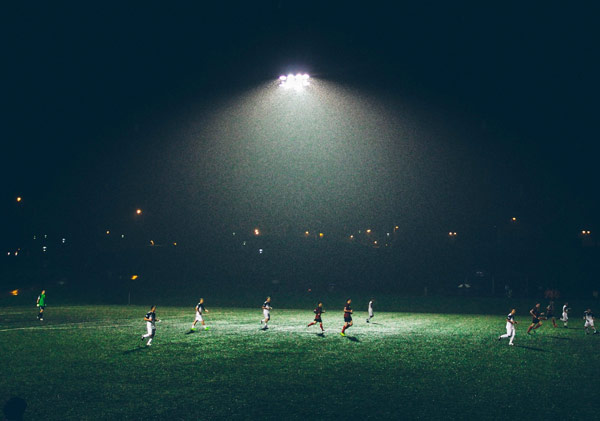 A combination of high lumens and wattage can illuminate any playing field perfectly. 750 to 1000 watt stadium lights emit the ideal levels of light. These lights feature
A combination of high lumens and wattage can illuminate any playing field perfectly. 750 to 1000 watt stadium lights emit the ideal levels of light. These lights feature
• Higher track scope
• They’re a cooler light source and don’t emit as much heat as higher wattage levels, so fans won’t feel the heat (nor will players)
• High-efficiency ballasts
• Luminaire resistance (shockproof)
• They are Eco-friendly, and they have superior response time (they’ll fire on in seconds)
Lumens measure the intensity of light that’s emitted from the stadium lights. Lumens per watt determine how efficient the bulbs are; therefore, it’s important to discuss this aspect with the lighting supplier, to ensure you’re getting the maximum efficiency with the new stadium lights you order.
3. The Beam Angle/Glaring Interference for Players
If the beam angle is wide, then the light distribution will be even on the ground. It helps reduce glare and allows players to see clearly. If beam angles are narrow, the uniformity of the light is low, increasing glare and redundancy. It’s important to perform a photochromic analysis, to determine the appropriate beam angle, and to ensure players have the clearest vision on the field during competition.
4. Color Temperature (International Play)
If the stadium lights are installed in fields where an international competition takes place, correlated color temperature is important. For example, FIFA requires a minimum of 4000K rating. It differs in each sport/event. Therefore, it’s important to discuss the international competition with the stadium light installation company, to ensure the proper color temperature rating is present before installing stadium lights.
5. Design
The stadium’s design is important in selecting the appropriate lighting source. Some variables including the
• Stadium size
• Seating capacity
• Glare angles
• Types of seats (reflection off the seats)
• Position and angle posts; and, how many stadium lights (flood or spotlights) are needed, should be determined before installing new lights.
6. Solar-Powered Options
Connecting solar-powered panels to stadium lights is a possibility today. Depending on the size of the stadium, the number of lights, and how frequently the lights are used, savings of 10 to 15% may result by installing solar-powered panels.
Ready to Invest in New Lighting?
Stadium lights are an excellent upgrade for any stadium, professional or non-professional. Before you invest, make sure you work through these variables and factors to help you select the appropriate lights. You’ll save, and you’ll end up with the best quality stadium lights, that will last for the next 25 years if you maintain them properly, while reducing your annual energy bills by almost half.

